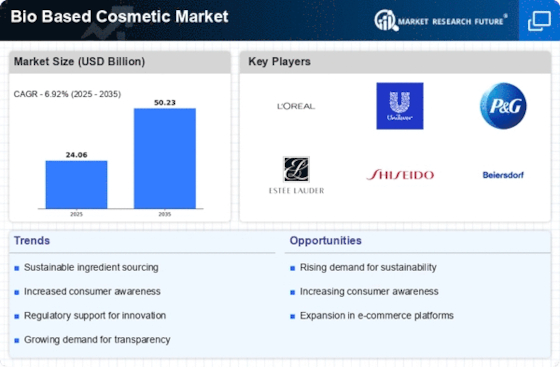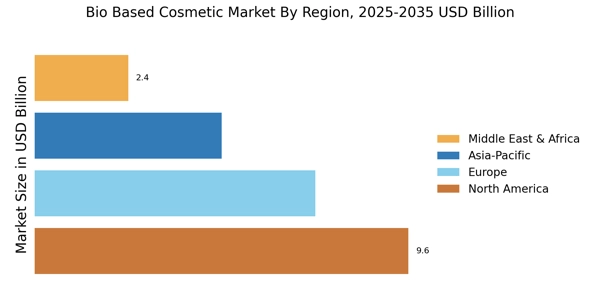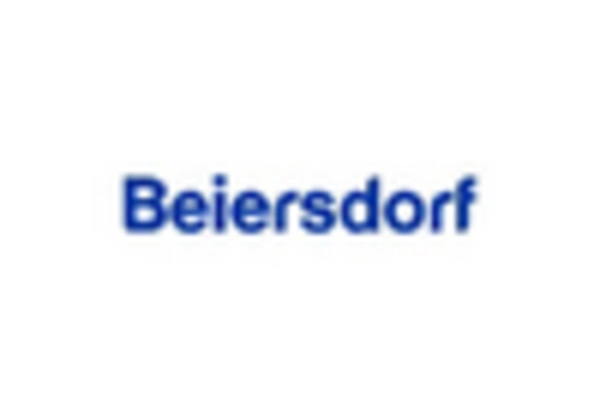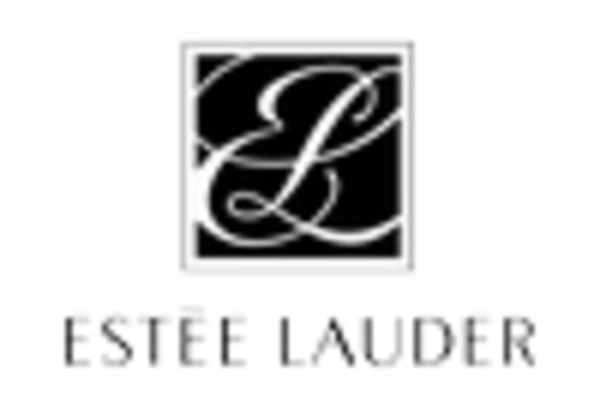Innovation in Bio-Based Formulations
The Bio Based Cosmetic Market is characterized by ongoing innovation in bio-based formulations, which is essential for meeting evolving consumer demands. Companies are investing in research and development to create advanced formulations that utilize natural ingredients without compromising efficacy. This focus on innovation is reflected in market trends, where products featuring unique bio-based components are gaining traction among consumers. As the industry evolves, brands that successfully integrate cutting-edge technology with bio-based ingredients are likely to stand out in a crowded marketplace. This emphasis on innovation not only enhances product performance but also reinforces the commitment of the Bio Based Cosmetic Market to sustainability and consumer health.
Rising Demand for Natural Ingredients
The Bio Based Cosmetic Market experiences a notable surge in demand for natural ingredients, driven by consumers' increasing awareness of the potential harmful effects of synthetic chemicals. This trend is reflected in market data, indicating that the market for natural cosmetics is projected to grow at a compound annual growth rate of approximately 10% over the next five years. Consumers are gravitating towards products that are perceived as safer and more environmentally friendly, leading to a shift in purchasing behavior. Brands that prioritize bio-based formulations are likely to capture a larger share of the market, as they align with the values of health-conscious consumers. This rising demand for natural ingredients not only influences product development but also encourages companies to adopt sustainable sourcing practices, further enhancing their appeal in the Bio Based Cosmetic Market.
Consumer Preference for Ethical Brands
The Bio Based Cosmetic Market is significantly influenced by the growing consumer preference for ethical brands. Shoppers are increasingly seeking products that align with their values, including cruelty-free testing and fair trade sourcing. This trend is evident in Market Research Future, which shows that a substantial percentage of consumers are willing to pay a premium for cosmetics that are ethically produced. As a result, brands that emphasize their ethical practices are likely to attract a dedicated customer base. This shift towards ethical consumption not only drives sales but also encourages companies within the Bio Based Cosmetic Market to adopt more transparent and responsible business practices, fostering a culture of accountability and sustainability.
Regulatory Support for Eco-Friendly Products
The Bio Based Cosmetic Market benefits from increasing regulatory support aimed at promoting eco-friendly products. Governments are implementing stricter regulations on the use of harmful chemicals in cosmetics, which encourages manufacturers to explore bio-based alternatives. This regulatory landscape is conducive to the growth of the bio-based segment, as companies seek compliance while also appealing to environmentally conscious consumers. For instance, regulations that favor natural and organic certifications can enhance market entry for bio-based products. As a result, the Bio Based Cosmetic Market is likely to see a rise in innovation and investment in sustainable practices, as brands strive to meet regulatory standards while catering to consumer preferences for safer, greener options.
Shift Towards Sustainable Packaging Solutions
The Bio Based Cosmetic Market is witnessing a significant shift towards sustainable packaging solutions, which aligns with the growing consumer demand for environmentally responsible products. Brands are increasingly adopting biodegradable and recyclable packaging materials to reduce their ecological footprint. This trend is supported by market data indicating that sustainable packaging is expected to grow at a rate of 7% annually. As consumers become more discerning about the environmental impact of their purchases, companies that prioritize sustainable packaging are likely to enhance their brand loyalty and market share. This shift not only reflects a commitment to sustainability but also positions brands favorably within the competitive landscape of the Bio Based Cosmetic Market, where eco-consciousness is becoming a key differentiator.


















Leave a Comment